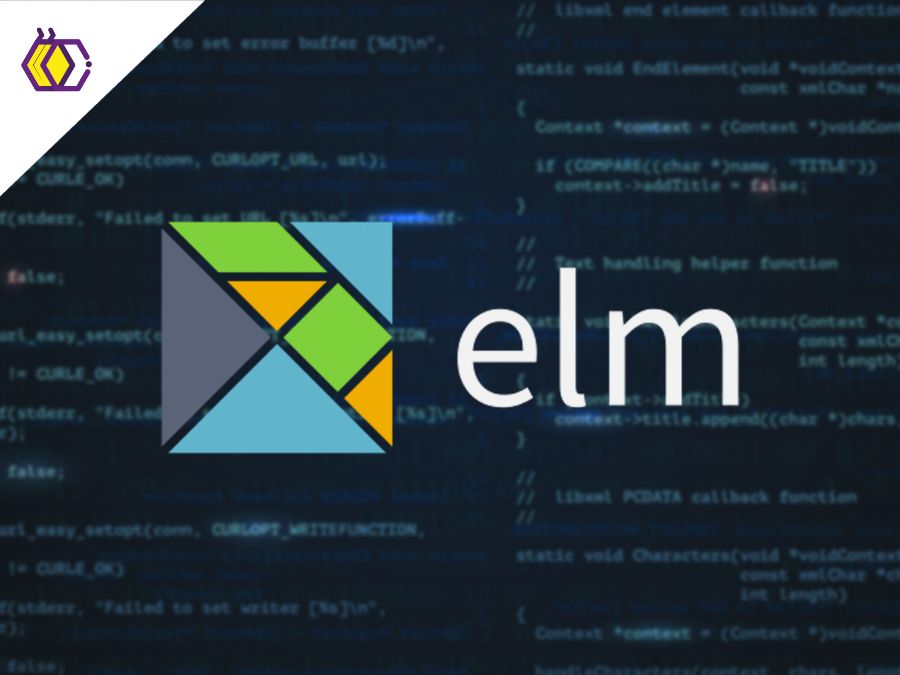

Elm
(7 minutes of reading) Behind the scenes of the programming world, a functional programming language has emerged as a powerful option for developers looking to create user interfaces that are robust, reliable, and easy to maintain. That language is Elm. In this article, we're going to explore everything you need to know about Elm: from its fundamental principles to its syntax, unique features, and practical examples. INTRODUCTION TO ELM Elm is a functional programming language designed to make it easy to create interactive user interfaces. Developed by Evan Czaplicki, Elm emerged as an answer to the challenges faced in developing complex web applications, where maintainability, scalability and error-free are vital. Elm 's great differential is its approach centered on the architecture model "The Elm Architecture", which emphasizes the immutability of data, the unidirectional flow of information, and the ability to create declarative and highly responsive user interfaces. FUNDAMENTAL PRINCIPLES OF ELM Known for its emphasis on simplicity and reliability, Elm offers a refreshing approach to building web applications. At the heart of Elm lies a set of core principles that guide its design and development philosophy. These principles, which include immutability, purity, and strong static typing, not only make code more robust, but also allow developers to create highly scalable and maintainable applications. Below, we'll further explore these core Elm principles and how they contribute to creating better software solutions in today's fast-paced digital landscape. Let's go? IMMUTABILITY AND ABSENCE OF SIDE EFFECTS Elm promotes data immutability, which means that once a value is assigned, it cannot be changed. This significantly reduces the occurrence of bugs caused by unexpected mutations and makes the code more predictable and secure. Additionally, Elm limits side effects by ensuring that pure functions are the norm. This contributes to a code that is more readable, testable, and free of unwanted surprises. THE ELM ARCHITECTURE Elm architecture model, also known as "The Elm Architecture" (TEA), is a pattern that organizes code in a clear and cohesive way. It consists of three main parts: 1- Model: Represents the state of the application at a given time. It is an immutable data structure that stores all relevant information. 2- Update: Defines how the application state changes in response to user actions or events. Each action is handled by a pure function that receives the current state and returns a new state. 3- View: Responsible for rendering the user interface based on the current state of the application. The view is a pure function that transforms state into visual elements. Model-Update-View cycle ensures a clear separation of concerns and makes the development and debugging process more efficient. ELM COMPILER One of Elm 's distinguishing features is its highly advanced compiler. The Elm compiler is known for providing extremely useful and user-friendly error messages that help developers quickly and effectively identify and fix problems. In addition, the compiler offers features such as type inference and static analysis that help prevent common errors before the code is even executed. SYNTAX AND CHARACTERISTICS Elm 's syntax is inspired by languages like Haskell and ML but is designed to be more accessible and readable for developers of all backgrounds. Here are some key features of Elm's syntax: A) STATIC TYPES Elm is a statically typed language, which means that the types of variables are determined at compile time and checked by the compile. This helps to prevent type-related errors and improve code quality. B) TYPE INFERENCES The Elm compiler can automatically infer the types of variables based on their usage. This means that you often don't need to explicitly specify the type of variables, making code writing faster and more concise. C) PATTERN MATCHING Elm supports matching patterns, which allows you to handle different scenarios based on patterns in the data. This is especially useful for dealing with type variants such as lists and records. D) FUNCTIONS AS FIRST CLASS CITIZENS Functions are treated as first-class citizens in Elm, which means you can pass them as arguments to other functions, return them from functions, and store them in variables. This promotes a pure and flexible functional approach to solving problems. E) LISTS AND RECORDS Elm offers data types such as lists and records, which make it easy to manipulate and organize complex data. Lists are used for ordered collections of elements, while records are data structures with named fields. F) MODULES AND IMPORTS Elm supports organizing code into modules, which helps modularize code and promote reuse. Importing modules into Elm is simple and straightforward, allowing you to use functionality from other modules easily. G) COMMUNITY AND ECOSYSTEM Although Elm is a relatively young language compared to others, its community is active and passionate. The Elm ecosystem includes libraries for front-end development, testing, data manipulation, animations, and more. Some notable libraries include: 1- elm-ui: A library for creating highly responsive and declarative user interfaces. 2- elm-test: A testing framework that makes it easy to write and run automated tests. 3- elm-http: A library for making HTTP calls securely and efficiently. CONCLUSION Elm is much more than a functional programming language. It's an innovative approach to creating reliable and responsive user interfaces. With its emphasis on immutability, The Elm Architecture and a highly advanced compiler, Elm enables developers to build complex web applications more securely and efficiently. If you're looking for a language that puts user experience first and promotes functional programming practices, Elm is an option to consider. And there? What do you think of our content? Be sure to follow us on social media to stay up to date!
Share this article on your social networks:
Rate this article:
[yasr_visitor_votes size=”medium”]



